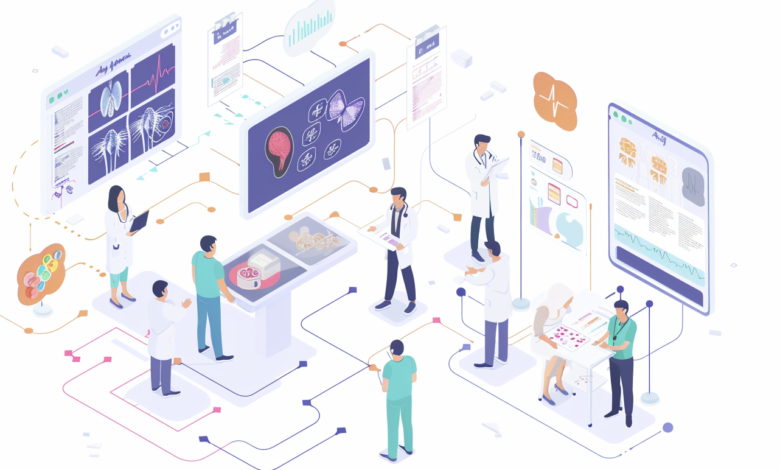
In the rapidly evolving healthcare sector, Artificial Intelligence (AI) and targeted data analytics stand at the forefront of transforming patient care. These technologies are not just enhancing the accuracy of patient journey mapping but are also making it more meaningful. This shift is pivotal for pharma marketers aiming to design more personalized and impactful healthcare experiences. In this post we’ll explore recent advancements and the role of AI in elevating patient journey mapping to new heights.
Unveiling New Clinical Insights Through Graph Databases
Graph databases are revolutionizing the way healthcare data is analyzed, offering a nuanced view of patient journeys. By semantically linking vast arrays of clinical data, including diagnoses and treatment patterns captured in ICD and CPT codes, these databases illuminate the intricacies of disease progression and patient care. Such insights enable healthcare providers to tailor interventions more effectively, ensuring that care delivery is both efficient and impactful.
Here is one an example of a high impact visualization of the patient journey from Graphable.AI
The Role of Wearables and eHealth in Patient Care
Wearable technology and Anywhere Health applications are critical in creating a collaborative healthcare environment. These tools collect vital targeted data in real-time, allowing for immediate clinical decision-making and early intervention. The integration of these devices into the healthcare system fosters a participatory care model, significantly enhancing patient outcomes and satisfaction, while also providing a much richer and contextual view of the patient journey. An incredible range of devices are now available to track countless different disease symptoms:

Automated Clinical Documentation: Paving the Way for EfficiencyThe automation of clinical documentation and EMR summarization through AI-driven tools is streamlining healthcare operations. This not only reduces the administrative burden on healthcare professionals but also ensures that the voice of patient records are accurate and comprehensive. Such advancements are crucial for maintaining high-quality care and facilitating seamless patient transitions. This timely and continuous flow of high quality patient-physician conversation is allowing for much richer levels of patient journey mapping.
The Future of Patient Journey Mapping: Building the Foundation for Omnichannel Campaigns
Mapping a clear and accurate patient journey is essential for executing effective omnichannel marketing campaigns. By integrating the voice of the patient with digital touchpoint data, pharma marketers can develop a comprehensive journey map that captures the full spectrum of patient experiences. This integrated approach allows for the creation of personalized, one-to-one content through Generative AI (GenAI), offering a level of customization previously unattainable.
The Horizon: Next-Generation Healthcare Technologies
Looking forward, the potential for AI and data analytics in healthcare is boundless. Predictive analytics of the patient journey could soon offer even more precise forecasts of patient health trajectories, enabling interventions that are not only timely but also highly personalized. Natural language processing might streamline patient-provider communications, making healthcare more accessible and understandable. Additionally, the integration of genomics data into patient care plans heralds a new era of personalized medicine, with treatments tailored to the genetic profiles of individuals.
In sum, the role of AI and targeted data in enhancing patient journey mapping is transformative, heralding a new era of healthcare where decisions are data-driven, care is personalized, and patient outcomes are significantly improved. As we continue to explore and integrate these technologies, the future of healthcare looks not only brighter but smarter, characterized by an unprecedented alignment between patient needs and healthcare delivery.




